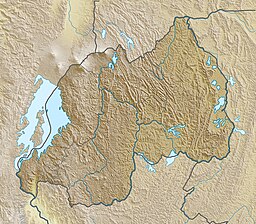| Lake Cyohoha South | |
|---|---|
| Lake Cohoha, Cyohoha Sud | |
| Location | Burundi and Rwanda |
| Coordinates | 02°25′28″S30°06′20″E / 2.42444°S 30.10556°E |
| Type | lake |
| Basin countries | Burundi, Rwanda |
| Max. length | 32 km (20 mi) |
| Surface area | 74 km2 (30 sq mi) |
| Average depth | 5 m (16 ft) |
| Max. depth | 7 m (23 ft) |
| Surface elevation | 1,348 m (4,423 ft) |
Lake Cyohoha South or Cyohoha Sud as it is known in Rwanda or Lake Cohoha in Burundi is a small lake in East Africa. It straddles the border between Burundi and Rwanda.
